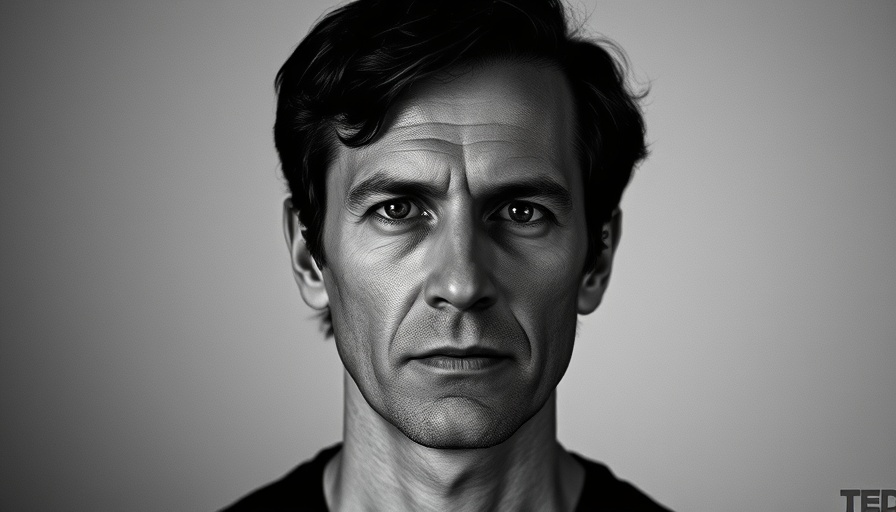
Exploring Family History Through a Personal Lens
In today's society, understanding family history is often a treasure trove of knowledge that informs both personal identity and collective memory. In the TED Talk titled "TED Talks Daily Book Club: Talk to Me | Rich Benjamin | TED", Rich Benjamin, an American cultural critic and anthropologist, embarks on an extraordinary journey through his family's past, shaped by the tumultuous events of political upheaval and personal trauma. This exploration is centered around his new memoir, Talk to Me: Lessons from a Family Forged by History, which intricately interweaves personal narrative with broader historical context.
In the TED Talk titled "TED Talks Daily Book Club: Talk to Me | Rich Benjamin | TED," the discussion dives into family history and trauma, exploring key insights that sparked deeper analysis on our end.
The Significance of Family History
Family history can often be ignored or tucked away in silence, much like Rich's experience with his mother’s reticence to share about their Haitian heritage. Rich comments on a universal truth many can resonate with — the mysterious stories of family members often remain untold. The hesitance to disclose painful past experiences can create an emotional chasm, but it is through probing these spaces that individuals can seek healing and understanding. By piecing together a vibrant narrative from the shadows of his family's history—stories of conflict, survival, and transformation—Benjamin sheds light on the broader implications of understanding our roots.
A Culture of Silence: What Causes Families Not to Speak?
Many families hold tightly to their narratives, often filled with trauma or shame, creating an atmosphere where discussions about the past become taboo. Rich shares his realization that his mother, due to the violence and turmoil she experienced in Haiti, could not share her story. This resonates with countless others whose family histories are eclipsed by pain or fear of judgment. By voicing his family's complex history, Benjamin not only honors his ancestry but encourages others to confront their pasts openly, demonstrating that this journey can lead to a form of love and reconciliation.
The Role of Trauma in Shaping Identity
Rich’s narrative illuminates how trauma heavily influences individual and collective identity. His mother's experiences in Haiti not only affected her life but also placed a heavy burden on Rich as he grew up as a black gay immigrant in America. The juxtaposition of public success and private strife speaks to the complexity of human experience. Understanding these layers of trauma can contribute to a more profound sense of empathy, bridging gaps within communities. By sharing these intimate accounts, he not only humanizes the broader historical narrative of Haiti but also highlights the interconnectedness of personal and societal struggles.
Unpacking the Complexity of Forgiveness and Healing
Forgiveness sits at the heart of many stories of trauma, and in Benjamin's case, it becomes a lens through which we can examine familial relationships. The fear and resentment stemming from his mother’s severe experiences challenge the traditional views of forgiveness. This aspect of Rich's narrative leads us to reconsider the dynamics of familial love and the expectations that come with it. Through his exploration, he encourages readers to reflect on their relationships, particularly how unresolved past hurts can transform the fabric of familial bonds.
Why Benjamin's Journey Matters Today
Rich Benjamin's memoir not only provides a personal account but serves as a vital reminder of the power of storytelling in understanding social and political landscapes. With the backdrop of his family’s historical trauma, he draws parallels to current events and the ongoing struggles faced by marginalized communities. His message encourages us to engage with our histories actively, fostering awareness and dialogue in a world where many still battle the ramifications of colonialism and systemic racism. As he says, we are all shaped by the shadows of history—both in light and darkness.
In conclusion, as we reflect on Talk to Me: Lessons from a Family Forged by History, let us not only observe the intricate intertwining of personal and societal narratives but strive to articulate our stories, for they hold immense power in shaping our futures. Rich Benjamin reminds us, in a world quaking with unresolved issues, that history and its wounds are not passive—they can forge alliances, provide insight into resilience, and inspire action for a better tomorrow.
 Add Row
Add Row  Add
Add 




Write A Comment